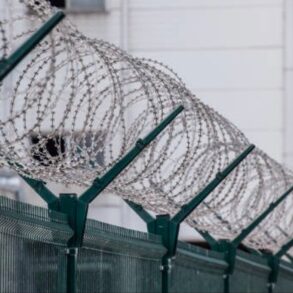SAN FRANCISCO – Mr Donald Trump’s plan to reopen Alcatraz was mocked online on May 5 by people who suggested the US President got the idea from watching TV.
The order to resurrect the once-notorious island prison in San Francisco Bay came out of the blue at the weekend with a post on his social media platform.
“Today, I am directing the Bureau of Prisons, together with the Department of Justice, FBI, and Homeland Security, to reopen a substantially enlarged and rebuilt ALCATRAZ, to house America’s most ruthless and violent Offenders,” he said.
The island fortress entered American cultural lore after a 1962 escape by three inmates, which became an inspiration for the film Escape From Alcatraz, starring Clint Eastwood.
Social media users were quick to spot that the film had been shown on television in south Florida on the evening of May 3, including in West Palm Beach, where Mr Trump spent the evening at his Mar-a-Lago resort.
“Is it possible Trump watched the movie and got caught up in it? Which led to the so-called brilliant idea of rebuilding Alcatraz?” wrote @HansonRitta on X.
“Are we getting American policy from TV shows?”
“This is really funny,” wrote @MatthewSpira.
“We’re going to spend a half billion dollars fixing up Alcatraz to never serve as a supermax in the San Francisco Bay all because an old man was bored and flipping through channels on a Saturday night.”
‘Not feasible’
Once nearly impossible to leave, the island can be difficult to get to because of competition for tickets. Alcatraz prison held fewer than 300 inmates at a time before it was closed in 1963 and draws roughly 1.2 million tourists a year.
Some visitors said the idea to rebuild it made little sense.
“At the moment it’s generating money,” said Briton Kevin Ghallagher. “It’s going to go from that to being a cost to the state.”
“It’s a waste of money,” added visitor Ben Stripe from Santa Ana, California. “After walking around and seeing this place and the condition it’s in, it is just way too expensive to refurbish.”
“It’s not feasible to have somebody still live here,” agreed Ms Cindy Lacomb from Phoenix, Arizona, who imagined replacing all the metal in the cells and rebuilding the crumbling concrete.
The sprawling site is in disrepair, with peeling paint and rusting locks and cell bars. Signs reading “Area closed for your safety” block off access to many parts of the grounds. Chemical toilets sit next to permanent restrooms closed off for repair.
No sharks
Asked on May 5 how he had come up with the idea, Mr Trump appeared to acknowledge the cinematic influence.
“I guess I was supposed to be a movie-maker,” he told reporters in the Oval Office.
“It represents something very strong, very powerful, in terms of law and order.
“Nobody ever escaped. One person almost got there, but they… found his clothing rather badly ripped up, and it was a lot of shark bites.”
The Bureau of Prisons (BOP) notes on its website that 36 people tried to escape from Alcatraz, and while most were caught or died in their attempts, the fate of five is unknown and they are listed as “missing and presumed drowned”.
But they definitely did not get eaten by sharks – a popular myth that has surrounded Alcatraz.
“There are no ‘man-eating’ sharks in San Francisco Bay, only small bottom-feeding sharks,” the BOP said.
However the President got the idea, his new prisons director William Marshall told the US media he was working on the plan.
“The Bureau of Prisons will vigorously pursue all avenues to support and implement the President’s agenda,” he said.
“I have ordered an immediate assessment to determine our needs and the next steps.
“We will be actively working with our law enforcement and other federal partners to reinstate this very important mission.”
High costs
Alcatraz – originally a military garrison – closed in 1963 owing to high operating costs after being used as a prison for just 29 years.
Because of the physical isolation of the island, operation costs were three times those of other institutions in the US, with food, supplies, fuel and even drinking water having to be transported to the island every week.
Maintenance and restoration work required at the time of its closure would have cost up to US$5 million, and officials decided it was cheaper to build new prisons elsewhere instead.
The island was occupied for 19 months from November 1969 by Native American protesters, who said they were reclaiming abandoned federal land.
In 1973, it became a tourist site, and now attracts more than one million visitors each year.
Visitors can take a tour of the dilapidated cell blocks, where broken toilets remain in the spartan cells.
On an audio tour narrated by former inmates and prison guards, they are taken around the refectory, where guides explain how discipline was maintained – and how it occasionally broke down.
The tour showcases the brutal, pitch-dark isolation cells in which prisoners were kept if they ran afoul of the feared warden.
Exhibitions detail the size of the prison population in the US and highlight how the system contains a disproportionate number of black people and those from disadvantaged backgrounds.
A gift shop sells everything from T-shirts and posters to fridge magnets with institutional rules. AFP, REUTERS, BLOOMBERG
Join ST’s Telegram channel and get the latest breaking news delivered to you.
This post was originally published on this site be sure to check out more of their content.








